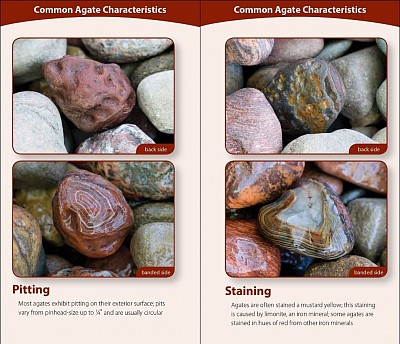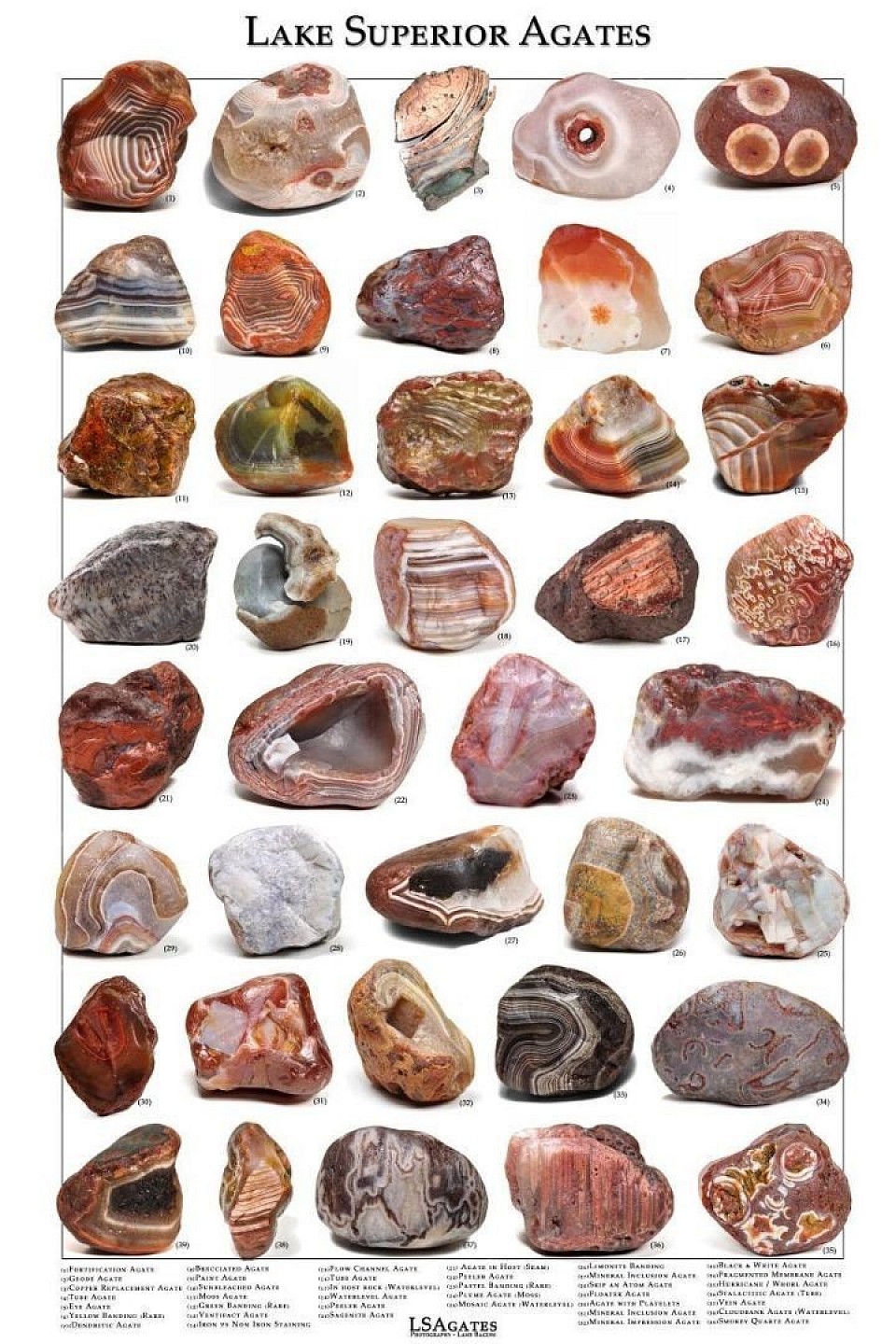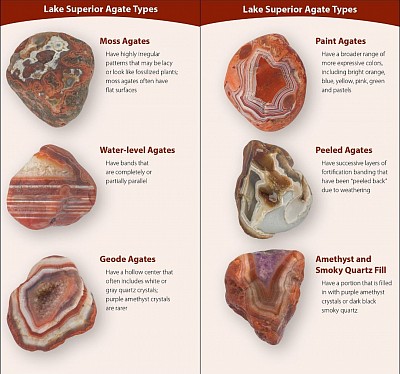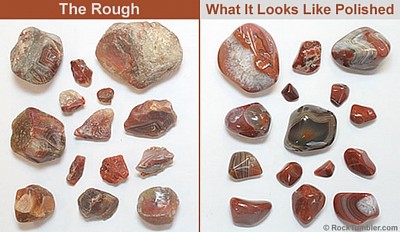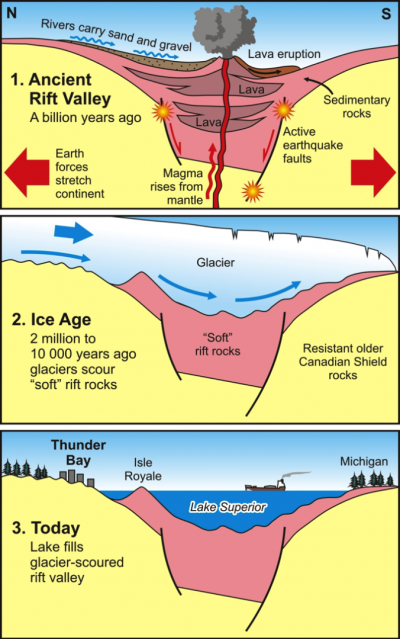Lake Superior Agates
Common Agate Characteristics
Lake Superior agates possess several distinctive characteristics that set them apart, including their vibrant colors, unique shapes, and varying sizes.
- Color
These agates are renowned for their rich hues of red, orange, and yellow, which result from iron oxidation. The specific shades and intensity of color within and between the bands depend on the amount of iron present and the degree of oxidation during their formation. While many agates display these warm tones, some may appear brown, and certain sections can be so iron-rich that they lose their typical translucency.
- Shape
Typically, Lake Superior agates form irregular spherical shapes and often feature a pock-marked surface texture. Additionally, they may exhibit conchoidal fractures—smooth, curved breaks—that give them a more angular and irregular appearance, adding to their unique physical character.
- Size
The size of these agates varies widely, ranging from as small as a pea to specimens weighing over 20 pounds. Most commonly, they are relatively small, averaging about 1 centimeter in diameter, but larger examples can occasionally be found.
- Other Characteristics
Composed primarily of quartz, Lake Superior agates are often translucent and exhibit a dull, waxy luster. Their bright, colorful bands are usually hidden beneath the surface of the unpolished rock and become visible only when cut or polished. When searching for these agates, collectors may also look for signs of entrance and escape channels—small pathways indicating where silica-rich water entered the cavity and where pressure was released during the agate’s formation process.
Formation
The agates were formed about a billion years ago during volcanic eruptions in what is now Minnesota. As the lava cooled, air bubbles became trapped within it, creating cavities. Over time, silica-rich water seeped into these holes, depositing layers of minerals that gradually built up to form the distinctive banded patterns seen in agates.
Smaller agates are often polished and crafted into jewelry pieces such as pendants, rings, and earrings, showcasing their vibrant colors and intricate bands. Larger agates, on the other hand, are frequently cut into thin slabs or slices to reveal their internal patterns, making them popular for display and collection.
The rarest Lake Superior agates are those weighing two pounds or more that exhibit perfect shape, vivid color, and well-defined banding. Such specimens are exceptionally uncommon, with only about one in every 10,000 agates meeting these high standards, making them highly prized among collectors and enthusiasts alike.
Color
The characteristic red hue of agates is primarily attributed to the presence of iron, a significant industrial mineral found abundantly in Minnesota. This iron content undergoes oxidation, which imparts the vibrant red coloration typical of many Lake Superior agates. In addition to red, these agates display a diverse palette of colors including rich bands of orange, tan, and yellow. These variations arise from different mineral impurities and their unique chemical compositions within the silica layers. The interplay of these minerals during the agate’s formation creates the intricate and colorful banding patterns that make each specimen unique and highly valued by collectors.
Glacial movement
The agates were dispersed by glaciers during the last Ice Age, which transported them to new locations while abrading, fracturing, and polishing their surfaces. This widespread distribution of agates highlights the significant impact of glacial movement across Minnesota approximately 10,000 to 15,000 years ago. After the glaciers retreated, the Earth's crust began to slowly rebound, or rise, due to the removal of the immense weight of ice. As a result, the northern shore of Lake Superior continues to rise at a rate of about one foot (30 to 50 centimeters) per century compared to the lands along the southern edge of the Great Lakes. Geoscientists refer to this gradual uplift as "isostatic rebound," a process that continues to shape the region's landscape today.
Limits of Collecting
It is generally understood that lower water levels can make it easier to find river agates. When water levels drop, areas that were previously submerged become exposed, revealing new spots where agates may be found. These conditions often uncover smooth, colorful stones that might otherwise remain hidden beneath the water.
Additionally, reduced water flow and increased sunlight exposure can enhance the visibility of the agates, making their natural beauty more apparent to collectors. The calmer water also simplifies the search process, allowing enthusiasts to more easily spot and collect these unique stones.
As a result, many rock collectors consider periods of low water levels to be the best time for agate hunting expeditions, taking advantage of the improved conditions to increase their chances of finding these hidden treasures.
